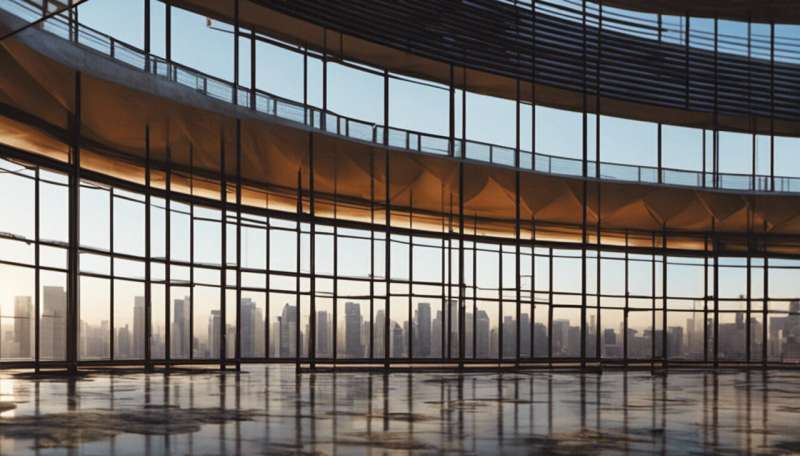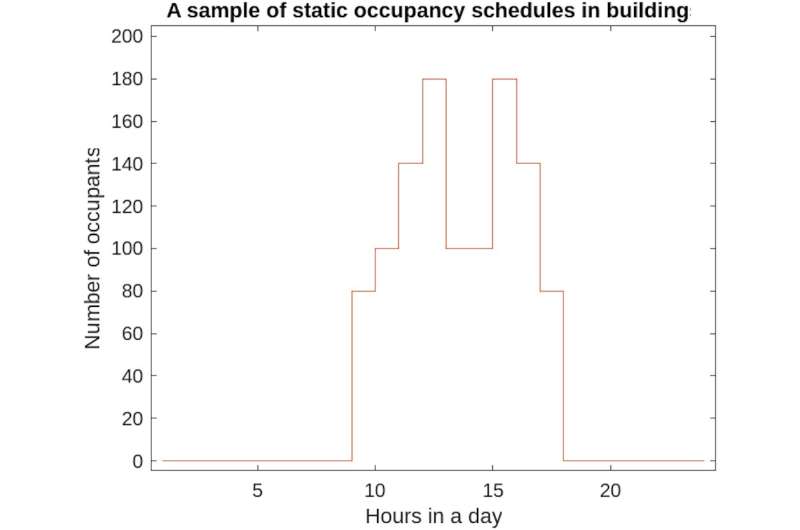Empty buildings consume more energy than you think


Buildings consume more energy when empty or partially occupied for long periods of time because they are designed to depend on human interaction. Credit: Shutterstock
Over the past few decades, a global population explosion, growing cities and a changing climate have brought global attention to the need to build energy-efficient and sustainable buildings.
Evidence shows that residential energy use increased during the pandemic. But what do we know about how people impact energy use in buildings they don’t occupy?
In a recent articleour team at the Human-Building Interaction Lab found that Empty buildings consume more energy than we think.
Buildings consume more energy when empty or partially occupied for long periods of time because they are designed to depend on human interaction.
Empty building
Our research found that empty buildings consume more energy in the climate is colder because the heating, ventilation and air conditioning (HVAC) systems need to compensate for the lost heat normally generated by the daily activities of the people in these buildings.
A major reason behind the increase use of energy To be Static schedules are used to design buildings. Static schedules provide hourly estimates of how many people will occupy these buildings. While these schedules are incorporated into Design and construction, they do not consider the actual number of people or their movement in the buildings. Therefore, our buildings have not been able to adapt to the emptiness while the doors are locked.

The figure illustrates the number of people in the sample building in a working day. Credit: Farzam Kharvari), Author provided
In spite of Research on replacing static schedules with stochastic schedules – schedules that consider various factors and attributes including, but not limited to occupancy – is developingOur study demonstrated that the implementation of simple strategy like install smart technology can help partially accommodate empty buildings occupation.
Use smart technology
Technology that senses human presence or counts the number of inhabitants can help minimize the negative effects of static schedules.
The simplest technology widely used in offices is the sensor used for lighting. Today there is a wide range of products for controlling lighting in buildings, from simple automatic switches to smart dimmers. They mainly work with a simple indoor motion detector to control the light and are potentially energy efficient.
Smart plugs can also reduce power consumption. Smart plugs allow you to control your devices remotely. But more importantly, they can be used to control power-hungry devices when they’re in standby mode, and potentially reduce device power usage.
Another technology used in buildings is demand-driven ventilation (DCV), which controls the airflow and adjusts the ventilation of the HVAC system based on the capacity used. Research has shown that DCV has the potential for significant energy savings, especially in colder climates because HVAC systems need less outdoor air heating for partially occupied indoor spaces.
It is also shown that reducing the thermostat setpoint in the free space significantly impacts energy saving in offices because the HVAC system heats the space down to a lower temperature. Appearance Smart thermostats could boost more energy savings in empty buildings. There are dedicated thermostats for different spaces in a building not only can save energy but also provide occupants with more thermal comfort.
Strategy is key
While the use of smart technology can help buildings adapt to partial occupancy, considering this partial occupancy rate during the design phase can maximize potential energy savings. potential quantity of the building. For example, offices with multiple floors or partitions might consider moving employees aside or to a specific floor during partial occupancy.
Whether you’re considering buying a new smart thermostat for your office or buying a smart plug, new technology can get expensive.
Therefore, it is important to start equipping buildings with solutions that encourage optimal energy and monetary savings. These potential savings can vary by climate, building type, and many other factors.
Evaluate each building individually to assess the performance of different strategies and technologies that can help maintain buildings in the absence of human interaction or partial occupancy. This will help reduce emissions and strengthen our fight against climate change.
Provided by
Conversation
This article was republished from Conversation under Creative Commons license. Read original article.![]()
Quote: Empty buildings consume more energy than you think (2022, October 18) retrieved October 18, 2022 from https://techxplore.com/news/2022-10-consume-energy.html
This document is the subject for the collection of authors. Apart from any fair dealing for personal study or research purposes, no part may be reproduced without written permission. The content provided is for informational purposes only.




